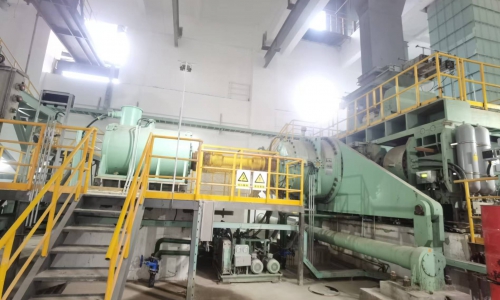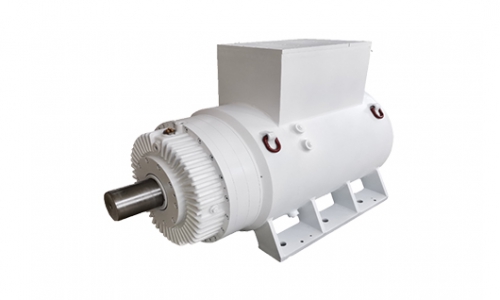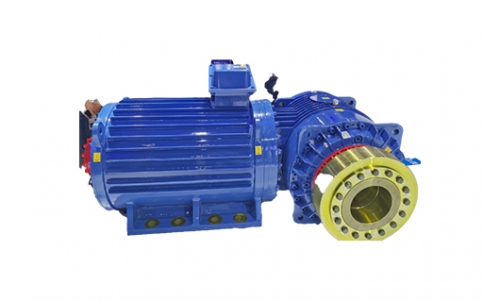2025-04-15 28
1. Carburising quenching: the ‘king process’ for heavy-duty precision transmission
Principle and advantages:
Carburising quenching will gears in the carbon potential environment at high temperatures for carburising, so that the surface layer of the formation of carbon-rich layer, followed by rapid quenching to form a high hardness martensitic organisation. After tempering, the ideal organisation of hard surface layer and tough heart is achieved.
Suitable for:
High speed and heavy load, high impact load working conditions
Transmission systems with high requirements for wear resistance and pitting resistance.
Engineering machinery, high-end reducer, aviation power gears
Technical advantages:
Deep penetration layer (up to 1.2~2.0mm) to support long-term service under high loads.
Extremely high surface hardness (HRC58~62) to enhance contact fatigue life.
Good core toughness to improve fracture resistance
Suitable for high-precision grinding to ensure the accuracy of tooth shape.
Caution:
Carburising process has high thermal stress, fine control of deformation and subsequent grinding or fine honing are required to ensure accuracy.
2.Nitriding treatment: ‘Golden armour’ for precision transmission.
Principle and advantages:
Nitriding is in the low temperature so that nitrogen atoms penetrate into the surface layer of gear steel, and alloying elements to form a hard nitride layer. Its advantage is that the size of the deformation is very small, and the treatment is gentle, does not affect the matrix organisation.
Suitable for:
Gear wheels with extremely high requirements for dimensional accuracy
Products that do not require subsequent grinding, or where grinding is not advisable
Precision equipment for long-term stable operation without shock loads
Technical advantages:
High surface hardness (HV800~1100), with strong wear resistance
Low-temperature treatment, minimal thermal deformation, suitable for direct use in precision gears
Good corrosion resistance and fatigue resistance
No or less grinding after treatment, shorten the manufacturing cycle
Limitations:
Thin carburised layer (about 0.3~0.6mm), not as good as carburised.
Not suitable for strong impact or variable load applications
3. Medium-frequency quenching: an efficient solution for localised strengthening
Principle and advantages:
Medium-frequency induction heating quickly on the tooth surface or tooth root, and spray quenching treatment, to achieve local hardening, retaining the overall toughness of the gear.
Suitable for:
Heavy-duty gears that are cost-sensitive but still require some surface hardening
Short cycle times with fast processing times
Large gears with high modulus and difficult to carburise as a whole.
Technical Advantage:
Fast heating and high process efficiency
Selective hardening of tooth flanks, tooth roots and other high-stress areas
Small deformation after treatment, easy to maintain the accuracy of tooth shape
Automated production, suitable for batch
Limitations:
Depth and hardness of the penetration layer are limited, usually less than carburising.
Overall performance improvement is not as systematic as carburising quenching.
4. Summary Recommendations
In heavy-duty precision transmission applications:
Carburising quenching + grinding is the first choice if comprehensive gear performance improvement is required;
If the pursuit of high dimensional stability and anti-wear performance, suitable for the selection of nitriding treatment;
If efficiency and economy are of concern, and the gear structure allows, medium frequency quenching can be considered as a complementary programme.
Selection of the appropriate heat treatment process, often need to be combined with the load characteristics of the gear, the working environment, precision requirements and cost control for a comprehensive trade-off.

As an important transmission device in the industrial field, micro gear reducer has a wide range of applications in various industries.According to the industry use, micro gear reducer can be divided into the following categories: military field: used in missiles, satellites and other precision equipment transmission system, requires high precision, high reliability and good anti-interference ability to ensure that the equipment in the complex battlefield environment can be stable operation.Automotive industry: For example, it is used in automobile electric seat adjustment, window lifting, wiper and other systems to help realize the precise motion control of these parts and enhance the comfort and safety of the car.Home appliance industry: Commonly used in washing machines, air-conditioners, ice creams, and other appliances.

The gearbox transmission system of large-scale heavy-duty equipment often works under complex working conditions such as heavy load, impact and variable load, and its core components are prone to damaging single and composite faults such as spalling, cracking and even fracture.Therefore, in-depth study of gear vibration mechanism, signal characteristics and fault diagnosis methods are of great significance.Recently, a research team launched a study on the coupling mechanism of compound faults in heavy-duty gearboxes under complex working conditions and multi-source excitation.They established a multi-degree-of-freedom coupled dynamics model of scalable gearbox with composite faults by using dynamic expansion and wavelet finite element and centralized parameter method as technical means, and studied the coupling factors and numerical solution algorithms as well as multi-degree-of-freedom coupled dynamics model of heavy-duty gearbox under complex working conditions with multiple sources.

In the heavy-duty gearbox industry, the right choice of gear oil is critical.Gear oils are like the lubricant between the joints of the human body, ensuring smooth power transmission and long-lasting durability of the components.Temperature is one of the key factors in selecting gear oils.At low temperatures, low viscosity lubricants flow well and reach all parts of the gear quickly, while at high temperatures, high viscosity oils prevent direct friction between the metals and provide better protection.The speed at which the gears are running should not be ignored.Low speed is suitable for the use of high viscosity oil, high speed is more appropriate to choose low viscosity oil, so as to ensure that the lubricant in a very short period of time into the gear gap.

Tel: 0523-87838908
E-mail: wusuoping@163.com
Add: No.1 Gensi Industrial Park, Taixing City, Jiangsu Province
